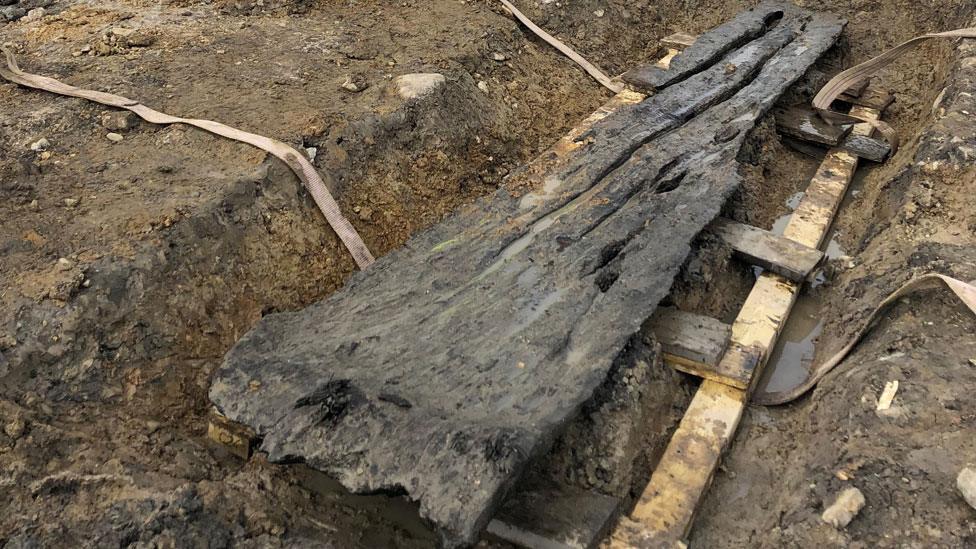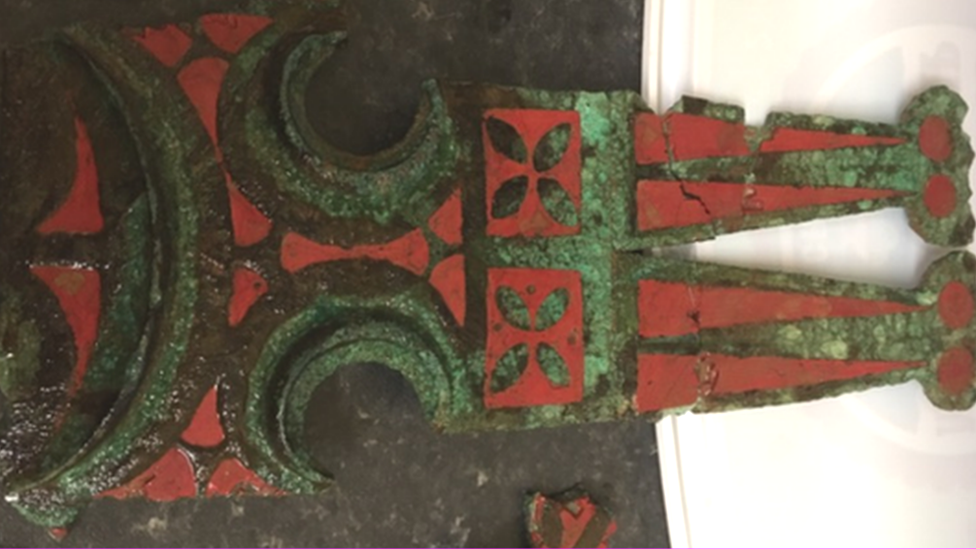Roman and prehistoric remains uncovered by new road construction
- Published

Archaeologists found the burial of a calf during excavations
A "significant" archaeological find which was uncovered while work was being carried out to improve a road will take another year to analyse.
The excavation took place last year after Vale of Glamorgan council started work on the A4226 Five Mile Lane, external.
The finds date from 3500BC to the Roman period, the first to fourth centuries AD. They include more than 450 sites of burial or cremation, external.
It is hoped the National Museum of Wales will display the finds.
The discovery includes:
Prehistoric Bronze Age burial mounds and cremations
Prehistoric Iron Age settlement enclosure with roundhouses and field system
A Roman metal-working site
A Roman villa previously excavated in the 1960s and 1970s

A crossbow brooch

Stone steps were uncovered
A spokesman for the council said: "The findings are currently being reviewed and analysed by expert archaeologists to establish detailed information about their background.
"After this process has concluded, an appropriate location for their long-term storage will be identified.
"Our expectation is that the National Museum of Wales in Cardiff will ultimately hold the completed archive."
Commonly known as Five Mile Lane, is its hoped the improvements will improve safety along the existing A4226 road between the A48, Sycamore Cross junction to the Weycock Cross in Barry.

An aerial view of the site between Barry and the A48

Excavation of a Roman villa
- Published8 June 2019

- Published8 June 2019

- Published7 May 2019

- Published31 January 2019

- Published12 July 2018

- Published7 July 2018
